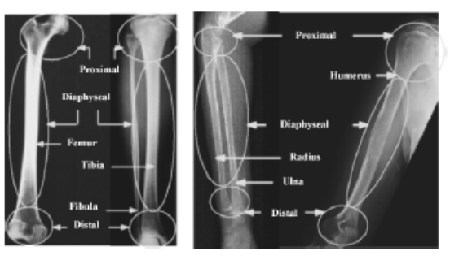


Indian Journal of Science and Technology
Year: 2023, Volume: 16, Issue: 1, Pages: 56-65
Original Article
Selin Vironicka1*, J G R Sathiaseelan2
1Research Scholar, Department of Computer Science, Bishop Heber College (Affiliated to Bharathidasan University), Tiruchirappalli, Tamil Nadu, India
2Associate Professor, Department of Computer Science, Bishop Heber College (Affiliated to Bharathidasan University), Tiruchirappalli, Tamil Nadu, India
*Corresponding Author
Email: [email protected]
Received Date:17 August 2022, Accepted Date:27 November 2022, Published Date:06 January 2023
Objectives: Methods in machine learning have been shown to be an essential tool for the diagnosis and treatment of disease. The scientists are constantly looking for new technology that might improve current clinical practise. One of the most well-liked study fields continues to be computerized bone fracture identification and categorization. Furthermore, identifying cracks and determining where they occur have been challenges for historically developed approaches for the long bone fracture method. Methods: We propose a new approach for automatic fracture detection in X-Ray images. This approach is built on top of two-stage fracture detection deep learning algorithm called Faster R-CNN with a major modification of using rotated bounding box. The described procedure is divided into four main steps: X-ray images are used to: I identify the bone contour; (ii) identify fracture-points or fractures; (iii) find a similar set of shapes that are compatible with the identification of cracks; and (iv) classify and thoroughly evaluate the fracture-type using bounding box. Finding: The resolution process uses the stretched numerical conventional line techniques (RDS), arcs, discrete curvature, and shape directory, among other mathematical characteristics of digital curves. We assessed the suggested model’s performance in terms of classification and detection. We divide x-ray pictures of bone fractures into 2 groups, fracture and non-fracture, and we also use a rectangular box to identify the location of fractures. Besides, an additional benefit of rotated bounding box is that it can provide relative information on the orientation and length of fracture without the further segmentation and measurement step. Novelty: This study develops a new approach to automatically and accurately detect fractures in X-Ray images. The proposed approach is developed on the basis of Faster R-CNN algorithm with a major modification for the task of rotated bounding box prediction.
Keywords: Long bone; X-Ray images; Classification; Detection; Faster RCNN; Fracture; Non-Fracture; Types
© 2023 Vironicka & Sathiaseelan. This is an open-access article distributed under the terms of the Creative Commons Attribution License, which permits unrestricted use, distribution, and reproduction in any medium, provided the original author and source are credited. Published By Indian Society for Education and Environment (iSee)
Subscribe now for latest articles and news.